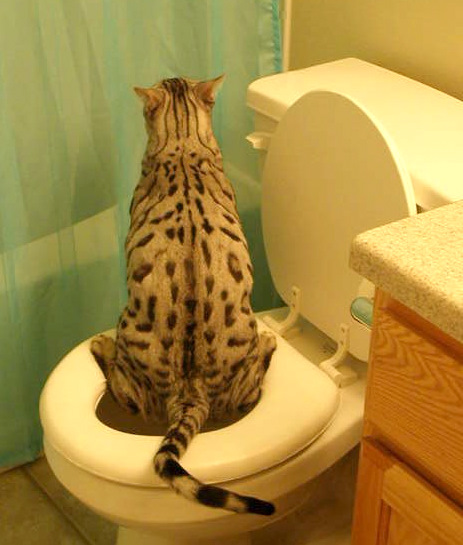Why You Should Never Flush Cat Poop Down Your Toilet - Critical Information
Why You Should Never Flush Cat Poop Down Your Toilet - Critical Information
Blog Article
Presented here below you might get some really good content all about How to Dispose of Cat Poop and Litter Without Plastic Bags.
Introduction
As pet cat proprietors, it's necessary to be mindful of how we deal with our feline pals' waste. While it may seem convenient to purge pet cat poop down the commode, this technique can have harmful effects for both the environment and human wellness.
Environmental Impact
Purging cat poop introduces unsafe microorganisms and bloodsuckers into the water system, posing a significant risk to aquatic ecosystems. These impurities can adversely impact aquatic life and concession water high quality.
Wellness Risks
In addition to ecological concerns, flushing feline waste can additionally pose health and wellness threats to human beings. Pet cat feces may consist of Toxoplasma gondii, a parasite that can create toxoplasmosis-- a potentially extreme ailment, specifically for expectant females and people with damaged body immune systems.
Alternatives to Flushing
The good news is, there are more secure and extra responsible means to throw away feline poop. Consider the adhering to options:
1. Scoop and Dispose in Trash
One of the most typical technique of throwing away feline poop is to scoop it into an eco-friendly bag and throw it in the trash. Make certain to use a specialized clutter inside story and deal with the waste immediately.
2. Usage Biodegradable Litter
Go with biodegradable cat litter made from materials such as corn or wheat. These litters are environmentally friendly and can be safely thrown away in the garbage.
3. Hide in the Yard
If you have a lawn, think about burying cat waste in an assigned area far from veggie yards and water sources. Make sure to dig deep enough to stop contamination of groundwater.
4. Install a Pet Waste Disposal System
Invest in an animal waste disposal system specifically designed for pet cat waste. These systems use enzymes to break down the waste, minimizing smell and environmental influence.
Final thought
Accountable animal ownership expands beyond providing food and sanctuary-- it likewise includes correct waste administration. By refraining from purging cat poop down the commode and selecting alternate disposal approaches, we can lessen our ecological impact and safeguard human health and wellness.
Why Can’t I Flush Cat Poop?
It Spreads a Parasite
Cats are frequently infected with a parasite called toxoplasma gondii. The parasite causes an infection called toxoplasmosis. It is usually harmless to cats. The parasite only uses cat poop as a host for its eggs. Otherwise, the cat’s immune system usually keeps the infection at low enough levels to maintain its own health. But it does not stop the develop of eggs. These eggs are tiny and surprisingly tough. They may survive for a year before they begin to grow. But that’s the problem.
Our wastewater system is not designed to deal with toxoplasmosis eggs. Instead, most eggs will flush from your toilet into sewers and wastewater management plants. After the sewage is treated for many other harmful things in it, it is typically released into local rivers, lakes, or oceans. Here, the toxoplasmosis eggs can find new hosts, including starfish, crabs, otters, and many other wildlife. For many, this is a significant risk to their health. Toxoplasmosis can also end up infecting water sources that are important for agriculture, which means our deer, pigs, and sheep can get infected too.
Is There Risk to Humans?
There can be a risk to human life from flushing cat poop down the toilet. If you do so, the parasites from your cat’s poop can end up in shellfish, game animals, or livestock. If this meat is then served raw or undercooked, the people who eat it can get sick.
In fact, according to the CDC, 40 million people in the United States are infected with toxoplasma gondii. They get it from exposure to infected seafood, or from some kind of cat poop contamination, like drinking from a stream that is contaminated or touching anything that has come into contact with cat poop. That includes just cleaning a cat litter box.
Most people who get infected with these parasites will not develop any symptoms. However, for pregnant women or for those with compromised immune systems, the parasite can cause severe health problems.
How to Handle Cat Poop
The best way to handle cat poop is actually to clean the box more often. The eggs that the parasite sheds will not become active until one to five days after the cat poops. That means that if you clean daily, you’re much less likely to come into direct contact with infectious eggs.
That said, always dispose of cat poop in the garbage and not down the toilet. Wash your hands before and after you clean the litter box, and bring the bag of poop right outside to your garbage bins.
https://trenchlesssolutionsusa.com/why-cant-i-flush-cat-poop/

I have been very occupied with Can You Flush Cat Poo or Litter Down the Toilet? and I'm hoping you appreciated the entire blog posting. Make sure you take the time to share this write-up if you enjoyed it. Thanks a lot for your time spent reading it.
Contact Us Today Report this page